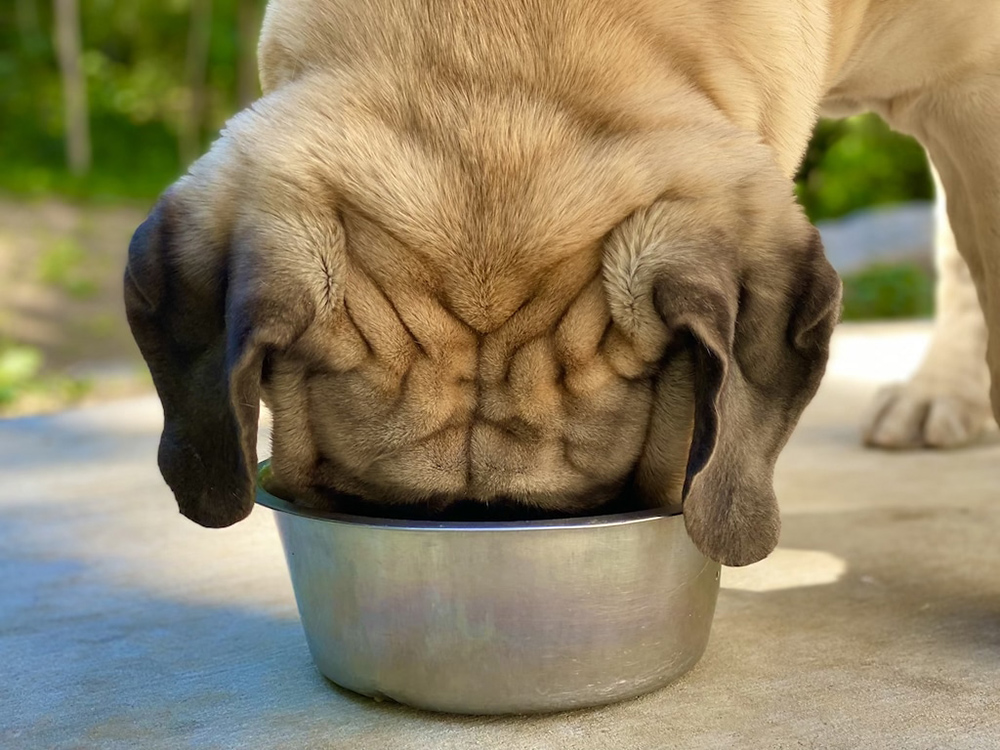By Heidi Clayton
About 20 years ago, I started feeding my dogs the raw meat diet when one of my dogs was clearly allergic to something in dog food. Despite all of the allergy testing, food elimination trials, and steroids I could not figure out what the source of the problem was. Several of my Bull Terrier breeder friends had been feeding the raw diet for years and suggested I try it to see if it helped my dog’s skin. I saw a difference almost immediately and have fed it raw food ever since.
Australian veterinarian Dr. Ian Billinghurst is often credited with starting the raw food diet for dogs movement. Billinghurst felt that the dogs he was treating in Australia suffered from more skin- and cancer-related issues than the dogs of his youth. He started feeding his own dogs a raw diet and formulating the correct amount of nutrition needed for them to thrive. In his 1993 book “Give Your Dog a Bone,” he details how he saw a decrease in skin issues and an increase in overall health in the dogs he treated. He coined the phrase the “BARF” diet, which is short for bones and raw food. To this day, his book is a great source of information on how to get started feeding raw food.
The raw food controversy is real in the veterinarian world. Many vets are vehemently opposed to feeding the raw diet. Valid concerns against the raw diet include bacterial threats, unbalanced nutritional values when making your own food, high fat content and cost. Most vets believe feeding a kibble diet is best and will provide your dog with the nutritional requirements that they need.
However, there has been an uptick in the vet world of mixing modern medicine and nutrition with a holistic approach. Many of these vets recommend the raw diet. They feel that the long-term benefits of feeding raw in reducing skin issues and promoting overall gut health far outweigh the risks, particularly now with the diet becoming more popular and commercially-made raw foods more available.
When I first started feeding my dog raw food, it was time-consuming and required traveling to a butcher shop for bulk amounts of meat and 50 pounds of chicken necks, which I then spent hours defrosting, weighing, and bagging for later use. I am thrilled that I can now buy my food online. It is shipped frozen solid right to my front door.
If you research raw diets, you can find an endless amount of both pros and cons. I personally have developed a feeding regimen for my dogs that has resulted in healthier skin, shiny coats, weight maintenance, and strong clean teeth. Dogs with compromised immune systems might do better on a hydrolyzed protein diet or a home-cooked diet. I firmly believe that there is no one best way to feed every dog. My dogs do eat potato-, pea-, and legume-free limited-ingredient kibble as a treat. I also rotate the raw protein that I feed them, switching up beef, lamb and venison.
Feeding dogs a raw diet is not for everyone. As always, do what is best for your dog and consult with your vet. A few excellent resources on raw diets are perfectlyrawsome.com and dogsnaturallymagazine.com. Also, feel free to reach out to me and ask about my experiences in feeding my dogs a raw diet. If you have any questions, please email heidi@fouronthefloordogtraining.net.
Heidi Clayton started Four On the Floor Dog Training to provide positive, reward-based dog training in South Jersey. She breeds, trains and shows bull terriers under the SoraBully’s Bull Terriers kennel name. Email questions to heidi@fouronthefloordogtraining.net or learn more at https://fouronthefloordogtraining.net










